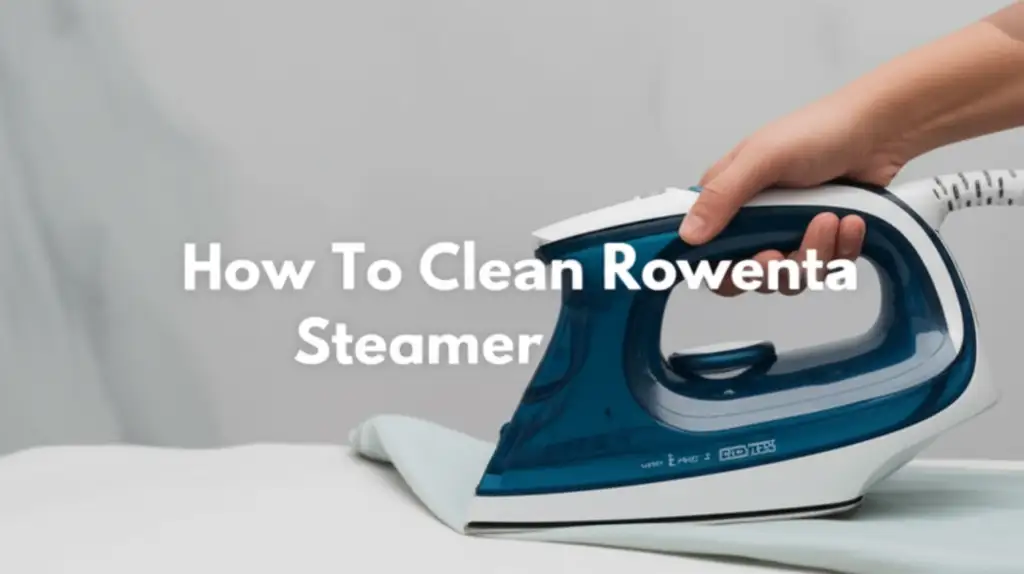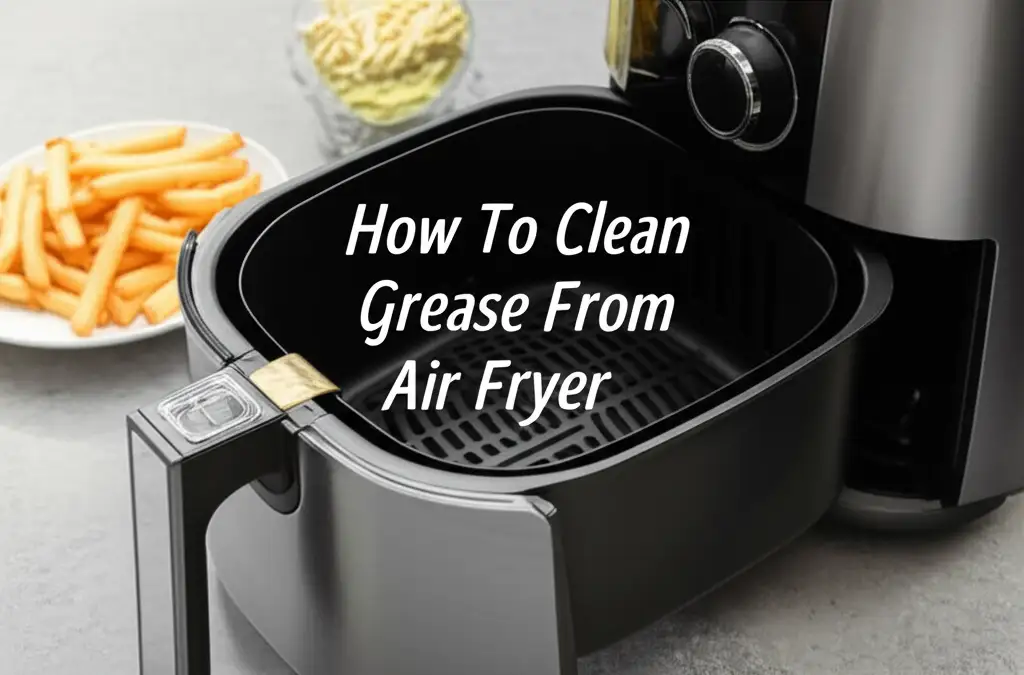· Appliance Maintenance · 12 min read
How To Clean Rowenta Steamer

Keep Your Rowenta Steamer Spotless: A Cleaning Guide
Do you rely on your Rowenta Steamer for wrinkle-free clothes? Many people do. A Rowenta Steamer is a great tool for quick garment care. But over time, hard water minerals can build up inside your steamer. This buildup reduces its performance. It can even shorten its lifespan.
Learning how to clean your Rowenta Steamer is important. Regular cleaning keeps it working like new. It prevents common problems like spitting water or no steam output. This guide helps you maintain your steamer. I will walk you through easy steps. You will learn quick clean-ups and deep descaling methods. Keeping your steamer clean ensures efficient, effective garment steaming for years.
Takeaway:
- Regularly clean your Rowenta Steamer to maintain performance.
- Use distilled white vinegar for effective descaling.
- Always rinse your steamer thoroughly after cleaning.
- Prevent mineral buildup by using distilled water for daily use.
How to clean a Rowenta Steamer?
To clean a Rowenta Steamer, you must first descale it. Use a mixture of white vinegar and water. Fill the tank with this solution. Run the steamer until half the tank is empty. Let it cool. Then, empty the tank. Rinse it thoroughly with clean water. This process removes mineral buildup and keeps your steamer working well.
Why Cleaning Your Rowenta Steamer Is Necessary
Your Rowenta Steamer works hard to remove wrinkles. It uses water to create steam. Over time, minerals from tap water build up inside the steamer. This buildup is called limescale. Limescale sticks to heating elements and internal pipes. It is a common problem for all water-using appliances.
Limescale causes several issues. First, it reduces steam production. Your steamer might take longer to heat up. It might produce less steam. Second, limescale can clog the steam vents. This leads to spitting water onto your clothes. It can also cause uneven steaming. Third, the buildup can damage internal components. This shortens your steamer’s life. It can also lead to costly repairs or replacements. Cleaning your Rowenta Steamer keeps it efficient. It also helps your steamer last longer. It ensures your clothes stay perfectly steamed.
Think about your daily steaming routine. If you use your steamer often, buildup happens faster. Water hardness also plays a role. Hard water contains more minerals. This means more frequent cleaning is necessary. Ignoring cleaning means your steamer performs poorly. It may also break down sooner. Regular cleaning saves you money and effort. It maintains the quality you expect from a Rowenta product. Cleaning is a simple process. It brings big benefits.
Essential Tools and Supplies for Steamer Cleaning
Before you start cleaning your Rowenta Steamer, gather your supplies. You do not need many items. The items you need are easy to find. Having everything ready makes the cleaning process smooth. It also makes it more efficient.
First, you will need distilled white vinegar. This is the main cleaning agent. Vinegar is a natural descaler. It dissolves mineral deposits effectively. Do not use other types of vinegar like apple cider vinegar. These might leave residues or smells. Second, have plenty of distilled water on hand. Distilled water is important for rinsing. It is also important for future use in your steamer. Distilled water contains no minerals. This prevents new buildup.
Next, get some soft, clean cloths. These are for wiping surfaces. They also help clean the steamer head. Cotton swabs or pipe cleaners can be useful. These help clean small holes or crevices. A measuring cup is also helpful. It helps you get the right vinegar-to-water ratio. Always ensure your steamer is unplugged and cool before you start cleaning. Safety is important. Avoid harsh chemical cleaners. These can damage your steamer. They can also leave harmful fumes. Simple household items work best for Rowenta Steamer care.
Regular Care for Your Rowenta Steamer: Quick Cleanup Tips
Regular care keeps your Rowenta Steamer in top condition. It prevents major problems. Quick clean-up after each use takes only a few minutes. This simple routine makes a big difference. It reduces the need for deep cleaning later. I find these steps very easy to incorporate into my routine.
First, always empty the water tank after each use. Do not leave water standing in the reservoir. Standing water can cause mineral deposits to form. It can also lead to mold or mildew growth. After emptying, wipe the inside of the tank dry with a soft cloth. This removes any moisture or residue.
Next, wipe down the exterior of your Rowenta Steamer. Use a damp cloth to clean the body. Pay attention to the hose and the handle. This removes dust and dirt. Then, wipe the steamer head itself. Lint or fabric fibers can collect on the steam plate. A clean, damp cloth works well for this. For small steam holes, a cotton swab can help. Make sure no fabric bits block the openings. These quick steps keep your steamer hygienic. They also ensure it is ready for its next use. Regular maintenance is the key to a long-lasting appliance.
Deep Cleaning Your Rowenta Steamer: Descaling with Vinegar
Deep cleaning is essential for your Rowenta Steamer. It removes stubborn mineral buildup. This process is called descaling. Descaling restores steam performance. It extends the life of your appliance. White vinegar is the best agent for this task. It is natural and effective. You should descale your Rowenta Steamer every few weeks or months. This depends on how often you use it. It also depends on the hardness of your tap water.
Preparing the Steamer for Descaling
Always start with an unplugged and cool steamer. Safety first. Make sure no water remains in the tank. Pour out any leftover water. You want to start with an empty system. This ensures the vinegar solution works effectively. It also prevents spills during the process. Disconnect any removable attachments. You can clean these separately later. This preparation ensures the descaling solution reaches all internal parts of the steamer. It prepares the steamer for a thorough cleaning.
The Descaling Process Using Vinegar
Mix your descaling solution. Combine equal parts distilled white vinegar and distilled water. For example, use one cup of vinegar and one cup of water. Pour this mixture into the steamer’s water tank. Do not overfill the tank. Fill it to the max line, but leave some space. Turn on your Rowenta Steamer. Let it heat up. Run the steamer until about half of the solution is gone. You will see steam coming out. This allows the vinegar to work through the internal components.
Turn off the steamer and unplug it. Let the steamer sit for at least 30 minutes. For heavy buildup, you can let it sit for an hour. This allows the vinegar to dissolve stubborn mineral deposits. The acid in the vinegar breaks down the limescale. This step is important for effective cleaning. Vinegar is a powerful cleaning agent. It can clean many surfaces. You can even use it to clean a shower with vinegar or to clean mold with vinegar. It also works well for cleaning glass with vinegar.
Rinsing Thoroughly After Descaling
After the vinegar solution sits, it is time to rinse. First, empty any remaining vinegar solution from the tank. Pour it out completely. Next, fill the water tank with fresh distilled water. Run the steamer again. Let it produce steam until the tank is empty. This flushes out any leftover vinegar and loosened mineral particles. Repeat this rinsing process at least two or three times. Use fresh distilled water each time.
Rinsing is very important. It removes all traces of vinegar. It also flushes out any dislodged scale. If you do not rinse properly, vinegar smell can transfer to your clothes. It can also leave a residue inside the steamer. After the final rinse, empty the tank. Let the steamer cool down completely. Then, wipe the exterior dry. Your Rowenta Steamer is now deeply cleaned and ready for use. This process makes your steamer perform like new.
Cleaning the Steamer Head and Accessories
The steamer head and its accessories touch your clothes directly. Keeping them clean is important. Lint, dust, and fabric fibers can accumulate on them. This can block steam vents. It can also transfer dirt to your garments. Cleaning these parts is simple. It should be part of your routine.
First, ensure the steamer head is cool to the touch. Never attempt to clean it while it is hot. Use a soft, damp cloth to wipe down the entire steam plate. If your Rowenta Steamer has a stainless steel plate, wipe it gently. For plastic heads, a damp cloth is also fine. Look closely at the steam holes. Sometimes, small fibers get stuck in these tiny openings. Use a cotton swab or a soft brush to gently clear any blockages. Do not use sharp objects. These can damage the steam holes.
If your steamer comes with brush attachments or other accessories, clean them too. Remove them from the steamer. You can usually wash these with mild soap and warm water. Rinse them well. Let them air dry completely before reattaching them. Ensuring all parts are clean prevents cross-contamination. It also helps maintain optimal steam flow. A clean steamer head gives you better results. It keeps your clothes looking their best.
Troubleshooting Common Steamer Issues After Cleaning
Sometimes, issues appear even after cleaning your Rowenta Steamer. Do not worry. Many common problems have simple solutions. Understanding these issues helps you fix them quickly. It saves you time and frustration. I have seen these problems myself and know how to fix them.
One common issue is the steamer spitting water. This often happens if the descaling was not complete. Mineral deposits might still be present. They can cause water to splash out instead of pure steam. To fix this, repeat the descaling process. Make sure you use enough vinegar. Also, ensure the steamer runs long enough during the descaling cycle. Thorough rinsing is also important. Remaining vinegar can cause spitting.
Another problem might be no steam production. First, check the water level. The tank might be empty. If the tank is full, there might be a blockage. This blockage is often due to severe mineral buildup. The descaling process may need to be done again. Sometimes, the hose can get kinked. Ensure the hose is straight and clear. If your steamer still does not produce steam, the heating element might be faulty. This requires professional service. For lingering odors, try running plain distilled water through the steamer several times. This flushes out any remaining smells. Regular maintenance reduces the chance of these issues.
Advanced Cleaning Tips and Preventing Future Buildup
Keeping your Rowenta Steamer clean is an ongoing effort. Beyond regular and deep cleaning, a few advanced tips can help. These tips prevent future buildup. They also ensure your steamer lasts for many years. Prevention is always better than cure.
The most important tip is to use distilled water exclusively. Tap water contains minerals. These minerals create limescale buildup. Distilled water has had these minerals removed. Using it prevents new deposits from forming. This significantly reduces your need for frequent descaling. While tap water might be convenient, it causes problems in the long run. Making the switch to distilled water is a small change. It provides big benefits for your steamer’s health.
Store your steamer correctly. After each use, empty the water tank. Let all parts air dry completely. Then, store the steamer upright. This prevents any residual moisture from pooling. It also discourages mold or mildew growth. Do not store the steamer with water inside. Also, never add anything to the water tank other than water or the vinegar solution for cleaning. Do not use fragrances, fabric softeners, or essential oils. These can clog the internal mechanisms. They can also damage your steamer. Stick to plain distilled water. Follow a consistent cleaning schedule. These practices will keep your Rowenta Steamer performing at its best.
FAQ Section
Can I use anything else instead of vinegar to clean my Rowenta Steamer?
White vinegar is highly recommended for descaling Rowenta Steamers. It is natural and effective. Some manufacturers offer specific descaling solutions. Check your Rowenta manual for approved alternatives. Avoid harsh chemicals, bleach, or abrasive cleaners. These can damage your steamer’s internal components. Stick to vinegar for safe and effective cleaning.
How often should I clean my Rowenta Steamer?
The cleaning frequency depends on several factors. How often do you use your steamer? How hard is your tap water? If you use your steamer daily with hard water, deep clean every two to four weeks. If you use it less often or with distilled water, every two to three months might be enough. Regular quick clean-ups after each use are always beneficial.
Why is my steamer spitting water after cleaning?
Spitting water after cleaning often means one of two things. First, there might be residual mineral buildup. The descaling process may need to be repeated. Second, there might be leftover vinegar. Rinse the steamer thoroughly multiple times with distilled water. Ensure all vinegar traces are gone. Check the steam holes for any remaining blockages, too.
Can I put essential oils or fragrances in my steamer?
No, you should never put essential oils, fragrances, or any additives into your Rowenta Steamer’s water tank. These substances can clog the internal pipes and steam vents. They can also damage the heating element. This can lead to steamer malfunction or permanent damage. Use only distilled water in your steamer for steaming purposes.
What type of water should I use in my Rowenta Steamer?
For optimal performance and to prevent mineral buildup, always use distilled water in your Rowenta Steamer. Distilled water contains no minerals. This stops limescale from forming inside the appliance. Using tap water, even filtered tap water, will eventually lead to mineral deposits. Distilled water extends your steamer’s life and efficiency.
Conclusion
Cleaning your Rowenta Steamer is simple. It is also an important part of owning this appliance. Regular maintenance keeps your steamer working efficiently. It ensures your clothes look great every time. We covered how mineral buildup affects performance. We discussed the easy steps for quick clean-ups. We also went through the crucial deep cleaning process using white vinegar. This method effectively removes limescale.
Remember to use distilled water for daily steaming. This is the best way to prevent future buildup. Always store your steamer empty and dry. Following these tips extends the life of your Rowenta Steamer. It helps you avoid common problems like spitting or low steam. A well-maintained steamer performs its best. Keep your Rowenta Steamer clean. Enjoy wrinkle-free clothes for years to come. Start your steamer cleaning routine today.
- steamer cleaning
- Rowenta maintenance
- descaling steamer
- appliance care
- garment steamer




